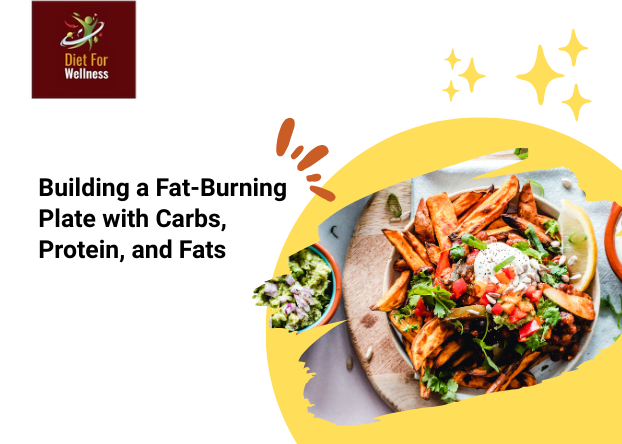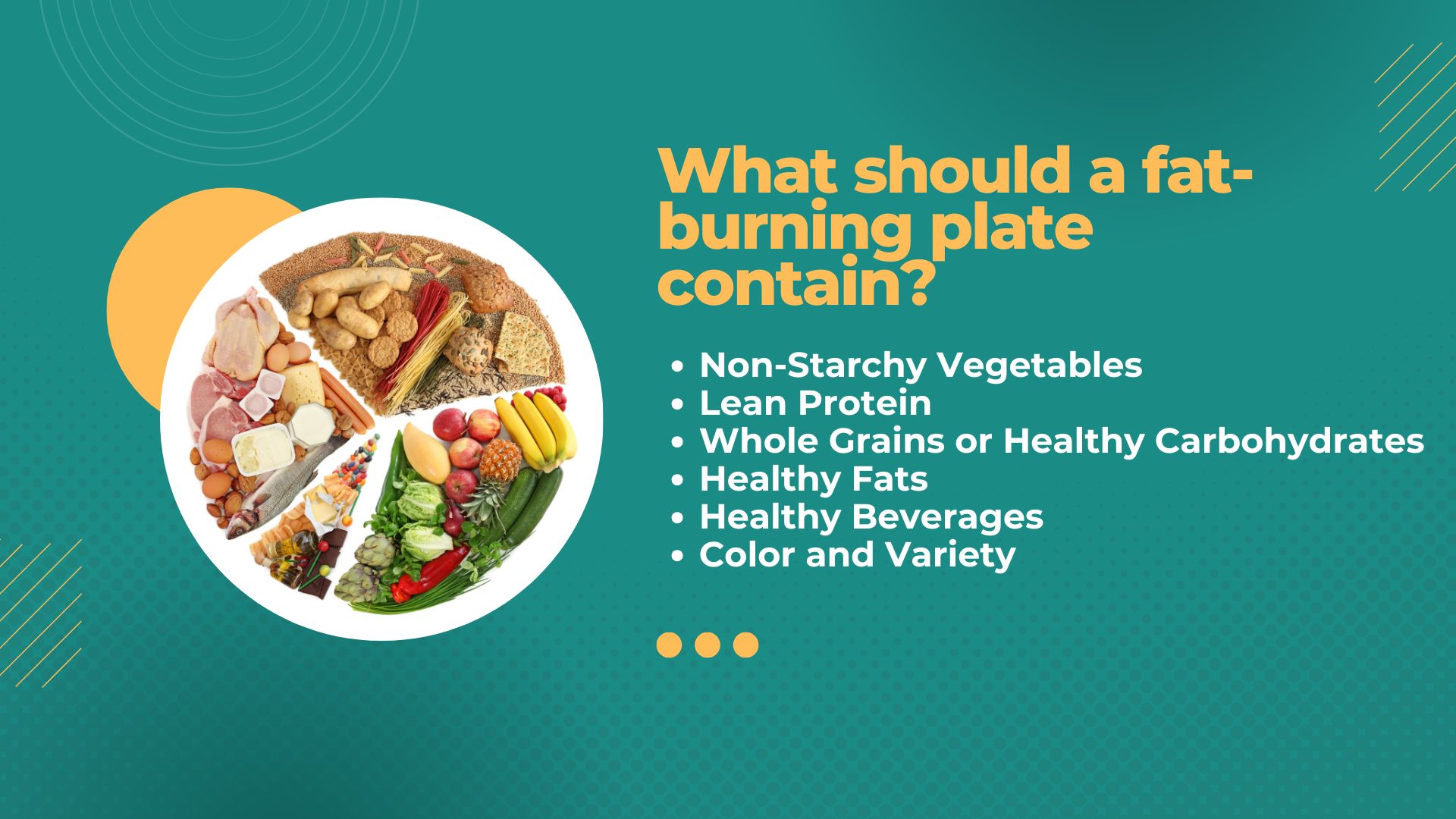Building a Fat-Burning Plate with Carbs, Protein, and Fats

Achieving a healthy weight doesn’t have to involve restrictive diets or confusing nutritional advice. The secret to achieving weight loss sustainably lies in mastering the art of building a balanced plate. You can support your weight management goals without feeling deprived or constantly hungry by understanding optimal food combinations.
At our wellness clinic, we focus on empowering our clients with practical, achievable tips.

Prioritize Non-Starchy Vegetables (Half Your Plate)
Dedicate half of your plate to non-starchy vegetables such as leafy greens, broccoli, bell peppers, cauliflower, or cucumbers. These vegetables are rich in fiber and water, promoting a feeling of fullness with minimal calories. Fiber aids in slowing digestion and stabilizing blood sugar levels, which helps in reducing cravings and preventing overeating.
Enhance flavor by roasting, steaming, or stir-frying your vegetables with a small amount of olive oil and your preferred herbs.
Add Lean Protein (One-Quarter Your Plate)
Protein is important for muscle development, maintaining a healthy metabolism, and ensuring satiety after meals. Include lean protein sources like skinless chicken, fish , eggs, tofu. low-fat yogurt, and legumes (beans, lentils). Protein keeps you feeling full for longer periods and helps preserve muscle mass during weight loss.
Opt for baking, grilling, or air-frying your protein instead of deep-frying to minimize unnecessary fats and calories.
Choose Whole Grains or Healthy Carbohydrates (One-Quarter Your Plate)
Carbohydrates are your body’s primary energy source, so they shouldn’t be eliminated. Focus on unrefined, whole carbohydrates such as brown rice, sweet potatoes, oats, and whole grain bread or pasta. Whole grains provide ample fiber and essential nutrients that support digestion and offer sustained energy, unlike refined carbohydrates that can cause rapid blood sugar spikes.
Don’t Forget Healthy Fats (A Small Amount)
Healthy fats are essential for nutrient absorption and make meals more satisfying. Include small amounts of fats from sources like nuts and seeds. olive oil, and nut butters. Healthy fats support cognitive function, cardiovascular health, and hormonal balance.
Maintain modest portion sizes, around 1–2 tablespoons of oil or a small handful of nuts.
Stay Hydrated and Be Mindful of Beverages
What you drink significantly impacts your weight loss journey. Sugary drinks, including sodas, sweetened teas, and specialty coffee beverages, can quickly add extra calories. Healthier options include water (plain or infused with lemon/cucumber), herbal teas, black coffee (in moderation) and unsweetened sparkling water.
Ensure Color and Variety
Consuming a wide range of foods ensures your body receives all the necessary vitamins and minerals. A more colorful plate often indicates a broader spectrum of nutrients.
Concluding Thoughts- Focus on Progress, Not Perfection
Creating a balanced plate doesn’t need to be complex or overly restrictive. It’s about crafting meals that nourish your body, manage hunger effectively, and encourage healthy weight loss, without eliminating entire food groups or feeling constantly frustrated.
If you’re finding weight loss challenging or are unsure how to customize your meals to your specific health needs, our team is ready to assist. Schedule a consultation with us to discuss a personalized plan that works for you.
For more weight loss, disease reversal, and wellness tips, follow our blog.
